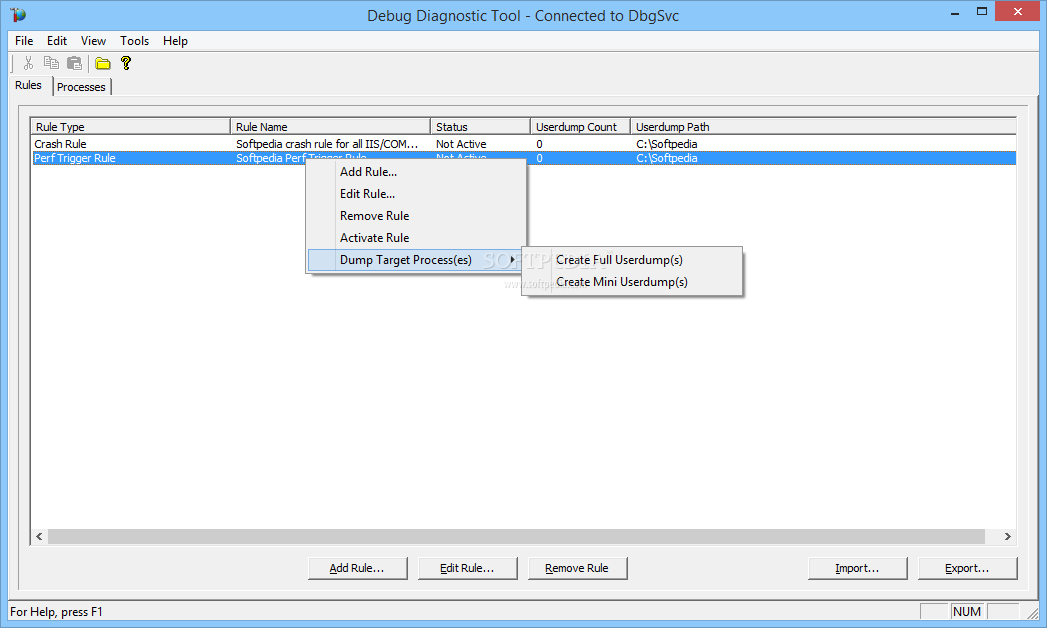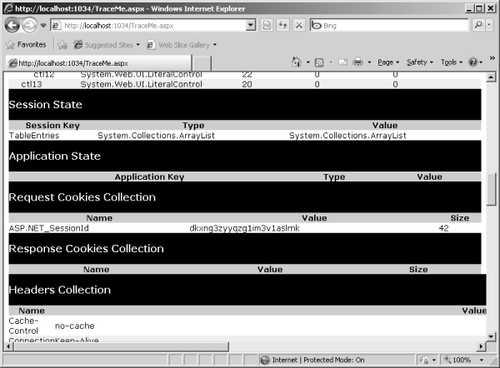

- MICROSOFT DEBUG DIAGNOSTIC TOOL TUTORIAL HOW TO
- MICROSOFT DEBUG DIAGNOSTIC TOOL TUTORIAL INSTALL
- MICROSOFT DEBUG DIAGNOSTIC TOOL TUTORIAL CODE
- MICROSOFT DEBUG DIAGNOSTIC TOOL TUTORIAL WINDOWS
The flag FORMAT_MESSAGE_ALLOCATE_BUFFER causes FormatMessage to allocate memory. GetFormattedMessage(pMessage, 4, 2, "Pony", "Horse", 6, "Blah") )įORMAT_MESSAGE_FROM_STRING | FORMAT_MESSAGE_ALLOCATE_BUFFER, LPSTR GetFormattedMessage(LPCWSTR pMessage. If the function is big enough, such memory leak is non-obvious and difficult to find and fix.
MICROSOFT DEBUG DIAGNOSTIC TOOL TUTORIAL CODE
Accordingly, in some circumstances, the code doesn’t free allocated memory:

However, there are one or several conditions that should return from the function upon failure. For example, the function calls TestFunc() in its turn, TestFunc allocates a memory block and should free it before the return. Here’s another case when the dynamically allocated memory doesn’t get free in all control paths of the function. If the variable gets another value before freeing memory, there are no chances to free the memory: The correct way is to use this variable to read and write data, and once the memory block is not required, to free it using the operator delete (or free in C). The code saves the pointer of the allocated memory block to a variable. Still, it doesn’t have the appropriate call to the operator delete (or free in C). In this case, the memory gets allocated using the operator new in C++ (or using the malloc function in C). Let’s start with a simple and most common example.
MICROSOFT DEBUG DIAGNOSTIC TOOL TUTORIAL INSTALL
Install both on your machine, and we’ll begin. Deleaker is available on the official website. But don’t worry, as there are at least two ways out, and you’ll get them after reading this article. The process of locating the origin of memory leaks sounds like a challenging task. Moreover, you don’t have access to the source code. Imagine a big and complicated application, which is built from hundreds of thousands of lines of code. In this case, we can rely on the WinDbg or Deleaker! When a leak comes from an external module whose source code is unavailable, these tools just don’t work. This article doesn’t highlight this scenario. However, they are a bit awkward in use as they require access to the sources and sometimes need debug builds. The Visual Studio debugger and C++ Runtime memory diagnostics tools can often provide information about the origin of a memory leak. It can work as a standalone tool or as a plugin in almost all popular IDEs: Visual Studio, Qt Creator, and RAD Studio.
MICROSOFT DEBUG DIAGNOSTIC TOOL TUTORIAL WINDOWS
WinDbg can point at the code block in the most complicated cases, potentially the culprit of the memory leaks in your program.ĭeleaker is a memory leak detection tool for Windows as well.

It’s a powerful debugger for both kernel and userspace from Microsoft and a great tool to find memory leaks.

WinDbg is a part of the Debugging Tools for Windows.
MICROSOFT DEBUG DIAGNOSTIC TOOL TUTORIAL HOW TO
Also, you will see how to use an alternative tool, Deleaker, a memory profiler for C/C++. This article will show how to fix memory leaks on Windows using the WinDbg application. Several tools on the market help investigate leaks some of them are free. The process of finding memory leaks is usually mind-numbing. No matter how experienced a developer is, memory leaks still happen. Well, sounds great, but C++ doesn’t have one. NET, or JavaScript, believe that the operator delete is not strongly required, and the garbage collection does the job anyway. Some developers that came to C++ from the managed world, Java. They vary, but the main ones are developer carelessness, the lack of skills or experience of native application development. There are different reasons why memory-related bugs exist in projects. Such leaks may “live” for years if a colossal developer team maintains a project,having no chance to meet and fix it. Memory leaks often happen in a C/C++ code, especially in big projects with a large legacy codebase.


 0 kommentar(er)
0 kommentar(er)
